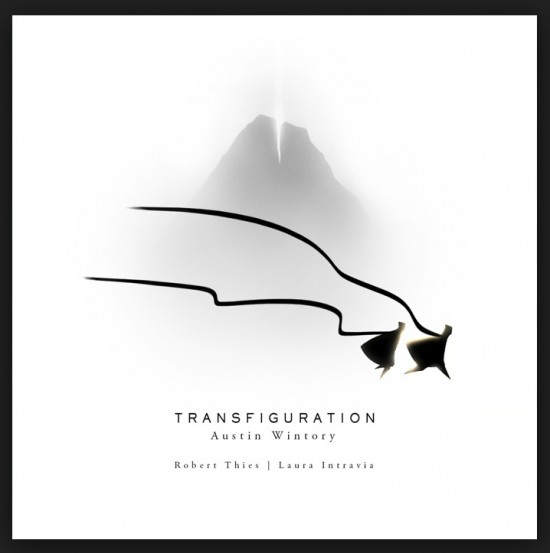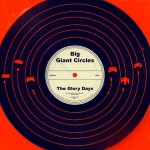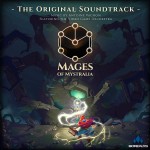
I feel that I must get one thing very clear before you continue to read this review. My speciality is piano music. I am a pianist, I listen to a lot of piano music, from Mozart to Debussy, and I go to piano concerts in London. I’m also as close to an expert on the use of the piano in games as you might get, from the triumphant fanfare like riff from Halo 3 to the myriad of Final Fantasy Piano albums. As a result, my standards may be unrealistically high. I also have a confession to make: I’ve never played Journey! I know I know, it’s on my to-do list. This is particularly heinous of me as not only is the game supposed to be amazing, but the soundtrack is said to be excellent as well. However, this might not be a bad thing for this review, as I will not be influence by the game or the original soundtrack. I will take the music at face value, in its own right, separate from its related media.
It’s interesting to note that the composer, Austin Wintory, seems to have had little to do with this album. Transfiguration has been arranged by the Laura Intravia, the singer in the last track, and performed by Robert Thies. In general I think this is a good thing because, as a composer myself, I know how hard it can be to separate myself from my own compositions. I prefer to arrange for other people so I can focus on the advantages and disadvantages of the instrument, rather than being influenced by my own work. So with that said, let’s take a look at Transfiguration.
Track 1, “Nascence,” starts off the album with a slow and quiet melody that I assume is the main theme from Journey. The melody itself conjures up a sense of exploration and epic landscapes to explore as well as a sense of loneliness, with a minor key and solo line. The track continues with a repeated broken chord motif before repeating the melody with harmonic accompaniment. It’s a simple but lovely piece that suites the soft tones of the piano well.
Track 2, “Threshold,” is a somewhat faster affair, that starts off well with grace note chords and shifting bass. However, I have a problem with the lack of structure that this track features. There is no defined harmonic progression or melody to follow and I found myself getting lost in the mix and eventually losing interest. The music changes at 1’43” with a series of broken chords and starts to use one of my most hated compositional techniques, repeating 5ths in the bass. I’m not sure if the original track used the same technique to greater effect, but here it provides an easy way to give a sense a wide expanses. There are moments of inspiration and interest here though, 2’58” being a sublime moment of light and interest before moving back into 5ths and meagre fragments of melody. I love the almost jazz like chords at 4’53” but find the tremolo chords to be another compositional faux pas, which gives the illusion of complexity and movement. At almost seven minutes without any real structure and three shifts in style, this piece outstays its welcome as well. It’s nice, but not seven minutes nice.
“Road of Trials,” track 3, picks up the pace even more and starts with a wonderful rising and falling melody that I could imagine being played by a violin. Beyond this I again had trouble following any specific melodic line, essential in solo piano music, and the staccato harmonies do get a bit repetitive. There is a moment of pure compositional genius at 1’08” with the main staccato riff rising through the register, harmonized by thirds, before getting a bit lost again. I love the main riff of this track and it is used to good effect, however, it’s a shame it only pops up in quick spots and not really developed upon. The rest of the track seems somewhat like filler.
I love the soft flowing introduction of “Final Confluence,” track 4. Like most of the melodies before, the right hand melody mostly consists of octave quavers. This gives a sense of size and large scale, but nothing to really latch onto and follow. Indeed, after listening to this album several times, the only theme I actually remember from this album is the main riff, which itself I think is used too much. The shifting higher register at 1’32” is very Debussy like and is another brief example of some truly excellent composition. The track ends with a tremolo background (I really hate that technique on the piano) and the main theme again.
“Apotheosis,” track 5, is another six minutes plus piece that starts with the main theme. I like the repetitive ostinato that is present throughout the first part, although again it isn’t developed much beyond the first few bars. From 2’40” we get two and a half minutes of fairly simple harmonic progression, basic semi quavers in the bass and a crotchet melody played in octaves. The track climaxes with chords that are really too high, losing the dramatic impact. There are also some bum notes at 3’48” and 3’54” which, in these days of easy retakes, is indefensible. The last third of the track slowly fades away, rehashing the main melody and missing the opportunity to bring back the first riff in a different form.
The last Track, “I was Born for This,” again starts with the main theme as an introduction. At 0’19” the music changes into a lovely little triplet riff that is immediately lost as the, admittedly lovely, vocal part comes in. The piano accompaniment is fairly simple, letting the voice take center stage. Apart from occasional returns when the voice is absent, the triplet theme doesn’t become fully realized until the last third, but is then lost to the big pounding chords of the climax in the shape of the main theme again. The track could have ended at 4’01” with the voice and triplet theme fading out, but instead goes through one more repetition of the fairly basic harmonic progression until the end.
The thing is, I personally don’t think the Journey music should have been made into a piano album. I don’t have personal experience of the original soundtrack, but I suspect the music gave a sense of wide open space, with fleeting melodies and constant movement, to fit the game. That’s the impression that I get from these piano arrangements at any rate, and I don’t think it works all that well here. I think the reason Final Fantasy Piano Arrangements work so well is that they are arranged from music with strong harmonic and melodic themes. Although I’m sure the Journey soundtrack is excellent instrumental music that fits the game well, translating that style to a solo piano hasn’t worked as well I think. The lack of strong thematic material gives this album more of a background music feel, music that is nice, but contains nothing to really catch your attention. However, that’s not to say there is nothing to enjoy here, and if you liked the original soundtrack, then I think you will like this. Like I said, it makes for good background music. The Transfiguration album can be purchased on iTunes, Amazon, and Bandcamp.
Tags: Arrange Album, Austin Wintory, Journey, Laura Intravia, Music Reviews, Robert Thies, Transfiguration, VGM, Videogame music







































